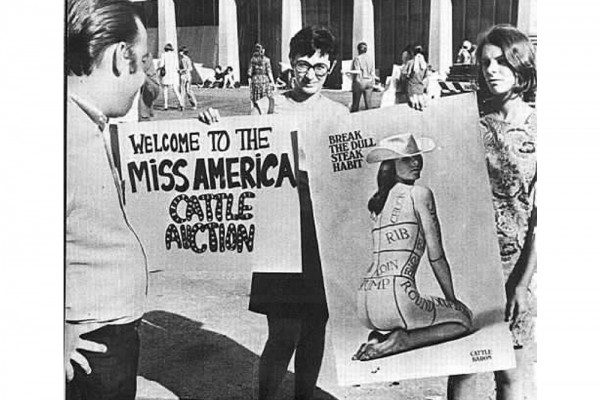Berger’s ‘Ways Of Seeing’ is storytelling in its finest genre, penned and narrated like a children’s film script, dismantling the false consciousness of the adult male empire, and the subjugation of the female body and mind, says Amit Sengupta.
If culture is a way of life, as Raymond Williams wrote, then the image of realism and fantasy is all about the Ways of Seeing, said John Berger. Seeing is both believing, not believing, creating a false construct, distorting the meaning, turning the vicarious and the voyeuristic into a work of art, making the obscenity of ‘looking’ into a work of consumerism. Seeing is at once disgrace and un-freedom, even while hiding the seeds of freedom and grace.Seeing is also appropriation, of skin, body, beauty, eyes, face, the feminine, her whole self and identity; seeing is the male usurper’s open display of machismo and power. She is merely an object of his gaze, which appropriates her, as property and work of art. She has no use of the mirror. She cannot see herself. Even she is looking at the mirror, she is an object of other mirrors. She can only be seen by the power of the male gaze, who owns her. Hence, not only does the male gaze objectify and appropriate her, reduce her into a commodity, she is herself compelled to reproduce her own objectivity as a slave. She becomes that moment of abject imprisonment and condemnation herself. Exiled from her own body, her consciousness, her social being and her inner being.
She is the image and the painting, trapped eternally, looking out at the male spectator, as captive as ever. She is neither skin deep, nor a free woman.
She is both myth and Sisyphus at the same time. She has no breathing space, no revelation, no pause, chance to get out of the trap. She is the image and the painting, trapped eternally, looking out at the male spectator, as captive as ever. She is neither skin deep, nor a free woman. She is merely a prisoner of the male gaze.
If the gaze can shift a paradigm, then the history of images, silences, text and sound, the sociology of conflict, differences, discrimination and domination, and the politics of dreams, realisms and fantasy would look so stunningly different. The main thing is that we should stop playing both the voyeur and the prisoner. For that, it is time to liberate the gaze. For that you have to enter John Berger’s ‘Ways of Seeing’.
If simplicity is lucidity, the famous BBC series, and the celebrated little book, ‘Ways of Seeing’ is like an adult cinema made like a children’s handbook. Based on Walter Benjamin’s equally celebrated essay, ‘The Work of Art in the Age of Mechanical Reproduction’, Berger’s film series and book is story-telling in its finest genre, penned and narrated like a children’s film script, dismantling the false consciousness of the adult male empire, and the subjugation of the female body and mind.Berger writes: “Adults and children sometimes have boards in their bedrooms or living-rooms on which they pin pieces of paper: letters, snapshots, reproductions of paintings, newspaper cuttings, original drawings, postcards. On each board all the images belong to the same language and all are more or less equal within it, because they have been chosen in a highly personal way to match and express the experience of the room’s inhabitant. Logically, these boards should replace museums.”
She is at once a catalyst as much as a passive consumer of an unfiltered narrative, like the female protagonist in Satyajit Ray’s Charulata, ‘looking out’ with a binocular. And, yet, Vermeer’s realism is sensitive, feminine, and feminist.
In the daily museum of images, Vermeer’s women are all indoors, the light across the window, often falling on a map, or a meticulously embroidered carpet, is a reflection of the elusive and seductive world outside, the mappings of the unmapped for a life of infinite un-freedom and domestic enclosure. The light is hope and knowledge, as is perhaps the sound of the piano, which trickles out into the open, or the glass of red wine in her hand. The man, mostly, is the journeyman, or the traveller, or the story-teller, who brings to her captive mappings the maps of the unknown, the unexplored, the stories which are never told or experienced by her. She is at once a catalyst as much as a passive consumer of an unfiltered narrative, like the female protagonist in Satyajit Ray’s Charulata, ‘looking out’ with a binocular. And, yet, Vermeer’s realism is sensitive, feminine, and feminist. It always hides the possibility of women’s liberation. A new mapping for freedom.
In other instances, in the paintings of pre and post medieval era, she is often the subject of multiple voyeurs, or the male spectator, who is also the owner-spectator, of, both, her body, and her image, carved in a commissioned painting. She is a fantastic ornament, in flesh and soul, her helpless nudity nothing but a commodity, to be celebrated, appropriated and consumed by the male gaze, forever in display for all concerned. Her ‘aura’ as Benjamin would describe the mystical idea of distance and unattainability, is at once diminished by the consumer society of the artist and the spectator. She has been reduced into a mannequin, as much as an object of lust. It is a tragic aura.Berger writes: “…a woman’s presence expresses her own attitude to herself, and defines what can and cannot be done to her. Her presence is manifest in her gestures, voice, opinions, expressions, and clothes, chosen surroundings, taste — indeed there is nothing she can do which does not contribute to her presence. Presence for a woman is so intrinsic to her person that men tend to think of it as an almost physical emanation, a kind of heat or smell or aura. To be born a woman has been to be born, within an allotted and confined space, into the keeping of men. The social presence of women has developed as a result of their ingenuity in living under such tutelage within such a limited space. But, this has been at the cost of a woman’s self being split into two. A woman must continually watch herself. She is almost continually accompanied by her own image of herself. Whilst she is walking across a room or whilst she is weeping at the death of her father, she can scarcely avoid envisaging herself walking or weeping. From earliest childhood she has been taught and persuaded to survey herself continually…”
So she can be a frontal nude for all to see in a painting, or selling revolution through a perfume, wearing almost nothing, her fatedness is strikingly similar. Between tradition and modernity, between the feudal and the market, thereby it is a deadly cocktail.
From the painting to the advertisement, she is forever being surveyed, by herself and by the male eye. So she can be a frontal nude for all to see in a painting, or selling revolution through a perfume, wearing almost nothing, her fatedness is strikingly similar. Between tradition and modernity, between the feudal and the market, thereby it is a deadly cocktail. Everything is a fetish. Even revolution. Like Che Guevara’s image selling a product.
“One might simplify this by saying: men act and women appear. Men look at women. Women watch themselves being looked at. This determines not only most relations between men and women but also the relation of women to themselves. The surveyor of woman in herself is male: the surveyed female. Thus she turns herself into an object — and most particularly an object of vision: a sight,” writes Berger.
Often, she is part of the tyranny of property. The landlord gazes at the vast expanse of the land he owns. She lies on his feet, following his gaze, his immediate property, passive and pre-determined, even her eyes only follow what the man is wanting her to see. The vast property he owns, including her.
In the end, the painter, like the camera for a girlie magazine, is forever celebrating the banality of her condemnation. She looks at the camera not to assert herself, but only to assert the power of the male eye behind the camera, like the painter’s brush. The canvas is her prison, as is the photograph. In a consumer society, she is compelled to have no other option.
In modern times, the advertisement, or the selling of the female image to sell an object, is basically the story being told yet again in a new texture with a new fabric. Like anorexic models walking in a ramp, as if in a cattle show, only one face will finally make it. That is the face, which the market will appropriate and sell. That is the symbol of success.Truly, John Berger, in that sense, tells a story which is at once a dismantling the stereotypes of subjugation and domination, as much as creating the possibility of a feminist critique.
Truly, John Berger, in that sense, tells a story which is at once a dismantling the stereotypes of subjugation and domination, as much as creating the possibility of a feminist critique. In the un-freedom of ‘Ways of Seeing’, often lies the possibility of not accepting this male gaze, rejecting this ownership of machismo, and the political economy of the fetish and a commodity society.
The new story, which is waiting to be told. That of freedom, knowledge and liberation. In the great tradition of story-telling, Berger’s film and book tells us that. There is life beyond the Myth of Sisyphus.
In the beginning was the gaze. However, in the beginning was also the possibility of finding a new gaze. A parallel cinema and a revolutionary canvas. The camera becoming a documentary of transformation. Turning the dialectic upside down, as Marx would say, to find the rational kernel. The inner self. The political unconscious. The new story, which is waiting to be told. That of freedom, knowledge and liberation. In the great tradition of story-telling, Berger’s film and book tells us that. There is life beyond the Myth of Sisyphus.














